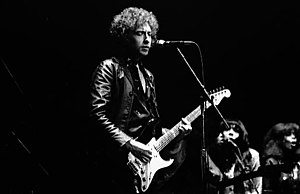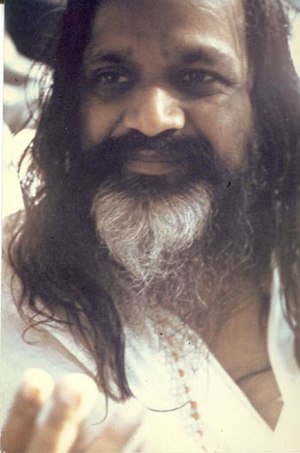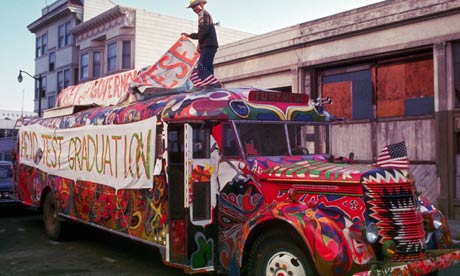Pat Kauba is a hippie-anarchist-philosopher with a love for evolution. He can be contacted at
patkauba@gmail.com.
Hippie: noun colloquial person (esp. in 1960s) rejecting convention, typically with long hair, jeans, etc. Oxford Dictionary
The
baby boomers boomed and the 1960s generation desired more than careers,
governments, marriage and religion.
They demanded, fun, freedom,
unconditional love and rights, the freedom of speech and information,
nudity, a joint and most importantly rock ‘n’ roll.
Disenchanted youth heard of fabled lands like
Istanbul, Tehran, Kabul, Goa, Kathmandu and
Shangri-la.
Promises of sweet paradises, heavenly experiences and learned
philosophers fuelled the tribe; boats, buses and planes moved them.
Paradise was around the corner if you just tuned in and dropped out - many
took the chance.
They hit the road; money, no money, it meant little, they were filled with the belief that
everything’s gonna be okay man.
“Pass me my hat and coat
Lock up the cabin
Slow night treat me right
Until' I go
Be nice to know
Katmandu, I'll soon be seein' you
And your strange bewilderin' time
Will keep me home"
Cat Stevens - Katmandu
The Hippie-Trail
There was nowhere that hippies didn’t go: North, Central, South
America, Europe, war-torn Africa, The Middle East and Asia. Most popular
was the trail from Europe to Turkey, Iran, Afghanistan and Pakistan,
into India and up to ‘Naypaul’. Usually with just a few dollars and a
will to live.
Infamously, most turned up at the beach in Goa, yet quite the number
visited the newly opened Himalayan Kingdom of Nepal. Visas were unknown,
time was unimportant and smiles became captivating; as well as
Kathmandu’s hashish shops. Those were the years before American
president Ronald Regan convinced the king to ban marijuana - as part of
his war on drugs.
Thamel was not even an idea (until after 1980), so all the hippies
congregated around Basantapur and the immigration office in Durbar
Square. Their part of town quickly got the name Freakstreet.
The Doors Of Perception
The new-age had a soundtrack: rock ‘n’ roll. Fuelled by love,
freedom, marijuana and LSD; airwaves buzzed with: Jimi Hendrix, The
Beatles, The Rolling Stones, Janis Joplin, Led Zepplin, The Grateful
Dead and more. Woodstock and Glastonbury music festivals began swinging,
clothes were burned and the free-love machine rolled.
Professor Timothy Leary was testing universal limits with
mind-expanding drugs at Yale University. Laboratories in California and
Geneva began mass-producing LSD; life’s possibilities became suddenly
limitless. It was a finger in the face of the bloodshed and greed being
backed by the Cold War.
The hippies were a fragmented lot says Debbie, who grew up outside
San Francisco and was in high school when the movement grew. Some became
back-to-landers, starting organic farms and lifestyles; the
flower-children stayed home trying to change the world with flowers,
nudity and rock ‘n’ roll; others became politicos, donning the suit to
fight from inside.
Others went to learn from the world and play music
elsewhere. “By the time I got out of high school the movement had
changed, but parents were always afraid their children would run away
with the hippies”.
The story goes that after ’69, the hippies sold out. Yet there is
little doubt their legacy echoes-on, like their musical icons. Civil and
human rights, freedom to live and love, saving the environment and
banning the bomb, were all galvanized by the hippie era.
Unlike cultures
and societies that scorn change, hippies are an easy-going lot allowing
it to happen, even evolve; rolling with it, letting it be … the kids
were alright.
Just By Being Open
Desmond from Ireland was doing lightshows for Jimi Hendrix and The
Soft Machine in the early 60s; music and art was his way, but he had a
serious travel-itch.
“I had made some money; a few hundred dollars at the start of the
60s, so I went to Africa, believing I would be okay I went from
Alexandria to Capetown, through civil wars churned by the Cold War.
People were kind, as long as you were open; I travelled with my guitar,
they were happy to hear and see something different”.
When finally back in Alexandria Desmond got work on a freight boat.
“I was soon to North, Central and South America, visiting places I’d
never heard of”. After a few years he brought his maritime saga to an
end for his next step - east.
In
those days travel was easy. From England you took the boat to Germany,
stuck out your thumb and within 36 hours you were in Greece and the boat
to Istanbul; Asia’s gateway. In Istanbul Desmond read a message someone
scrapped into a door: “what are you doing here, when Afghanistan is
only a bus ride away”?
He fell in love with Afghanistan’s people, culture, music and hospitality. But then came the Russian army, ending the dream.
Next was India: Mumbai for the music and Goa for the beach, taking
the two-day boat ride, a rite-of-passage for many hippies. “India was so
welcoming, everyone was happy to see and have us around. They were good
times, in those days no visa and no ways to show-off wealth; everybody
was on the same level”.
“I finally made it to Kathmandu in 1970, what a place; the way the
streets were laid, its red–bricked buildings and water fountains; the
welcoming nature of people towards the
pauna (guest). Nights would be filled with the sound of musical
bajan from countless temples. All that happened when you fell asleep was someone would put a blanket over you".
The Nepalese were really interested to hear our music after isolation
for so long. The Indians were more informed; Cliff Richard was born
outside Lucknow and IBM had a printing press outside Delhi, so
western-music was more available”.
Desmond reminisces when I ask about the 60s: “oh I remember it well,
for me it lasted about 20 minutes, around 1962 in a room in London. I
was not long back from travelling and was playing guitar with friends,
when two Americans arrived wearing beautiful Afghan outfits.
They had just returned, bringing back some Afghan hashish, which they
happily shared. The crowd grew and after a few hours a voice from the
back asked: how much does that cost there and how difficult is it to
bring back? I could see wheels turning, calculating the profit. I saw
the 60s end, for me it lasted about 20 minutes”.
An International Dope Story of the 70s
Howard Marks’ Mr. Nice shares a story about hashish exports to America, with a combination of characters:
On
Independence Day, July 4th, 1975, 500 Kilos of hand-pressed Nepalese
temple balls, some of the best hashish in the world, was flown from
Kathmandu via Bangkok and Tokyo to New York. It was being smoked in
Greenwich Village the next day. I was very rich again, and I was in my
twenties.
Ernie
wanted to do another load right away, a bigger one. Old John wasn’t
keen. The suitcase of dollars that Tom Sunde had taken to Nepal played
havoc with the Kathmandu currency markets.
‘This
is the American madness. More, more, all the time. Next year the
Nepalese won’t plant rice, they’ll plant the thing and all starve. They
don’t want money; they want medicine’.
I,
however, agreed with Ernie and persuaded Old John to reluctantly commit
himself to send a 750-kilo load. It worked. Other loads were sent from
Nepal, but none were bigger. After one of the loads, Old John drove an
ambulance to Kathmandu stuffed with antibiotics, bandages and other
medical supplies and left it there. He refused to do any more loads.
‘Let Nepal be Nepal’.
Everything Grows
Attila from Germany reminisces how it all started for him: “I was 15
years old when I met an Italian man who said “I belonged in India” and
he would pay my ticket. I went to mother and she gave her blessing”. It
was the late 70s when Attila made it to Goa and calls himself the fourth
generation.
“When I started, things were a little harder, the peace and love of
the 60s was being replaced by the more anarchist movement of the 70s;
not caring, wanting to do whatever they wanted. For the most part people
were really amazing, open and kind, we still had places where we could
live naked and free around Goa”. Music was the rhythm cemented by the
now-famous full moon parties.
In 1980 Attila first made it to Nepal: “it was a fascinating place
with really kind people, we used to enjoy full moon parties at Adeshwor
Temple”. It was an established party since 1965. Nepal was on the map as
a place where people could have their freedoms.
But in 1982 it all started to go down hill for the Goa-tribe. One
night a hippie lost his mind with a bad combination of drugs, going on a
killing spree around Aranbol’s lake during a party. “Three of my
brothers died, I was the only witness, everybody ran into the jungle,
but I hid in a bush not seeing anything, I kept hearing the sound of a
blade cutting air:
wooosh. When I came out, my brothers were dead”.
And with that Goa’s freedom began to end. The police came regularly.
Ironically MTV started making it more commercial, leading to
mafia-types. With that Attila left the beach, ending up at a temple
outside Lucknow. There he found his guru and would stay with him for
seven years, until Guru-ji told him to go back to the jungle.
Hare Krishna, Hare Ram
The influences of India and Nepal with its various religions
attracted many searching for divine answers. The Hare Krishna movement
exploded, attested by ISKON (movements name) being in 150 countries
today. The messages of Osho spread worldwide.
The holy gathering of
Kumbhamella, the world’s largest next to the Ganga River was being frequented by western Babas, resplendent with loincloths,
camandals (pot) and gurus. Within this world the hippies began to connect and expand.
Desmond recounts about the 1971 Bollywood movie
Hare Rama Hare Krishna, directed by
Dev
Anand. “It was mostly recorded in Swyambu, I warned my friends who had
roles, not to do it. You would get a meal and 60 rupees a day, but what
were you representing?
We were to be portrayed as sex and drug addicts,
who stole from temples”. Sure enough, the movie coincided with the
decline in respect visitors received from hosts back in India. Visas
became required, hospitality dropped and police became stringent.
However it didn’t wane much here in Nepal. It was
1983 before Debbie made it to Nepal.
“Everybody was warm, open and happy
to see us. I trekked alone that year from Everest out to the east; a
route nobody took. People would help with meals and porches to sleep on,
but I did learn to say in Nepalese that: “my friend is following”.
And So The Story Goes
By the mid 80s Pumpernickel Café in Thamel (the
first in Kathmandu’s new tourist area) put up a sign saying “no
chillums” - the writing was on the wall. Visas had become tighter and the
hippie pauna and their ways were not as welcome.
As for Nepal, the Adeshwor full moon parties may be finished, but Freakstreet is still on every young hippie’s map.
Today denim jeans are the norm amongst Nepalese,
boys and girls are not (so) afraid to hold hands, the guitar is a common
sight on street corners and the music in Thamel is the sounds of the
60s and 70s.
Even though most hippies went home, some of their ways leaked into Kathmandu’s culturescape - forever.
























